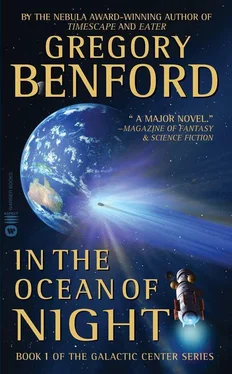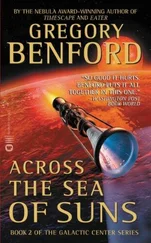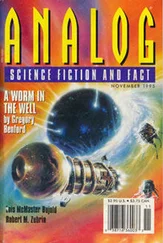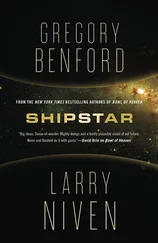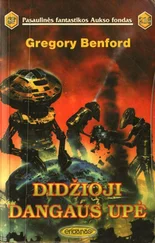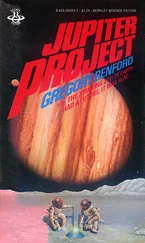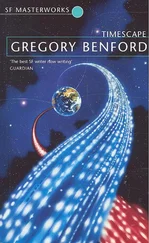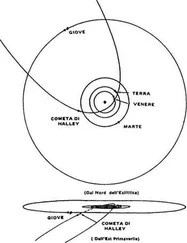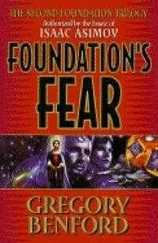In the Ocean of Night
by Gregory Benford
We shall not cease from exploration
And the end of all our exploring
Will be to arrive where we started
And know the place for the first time.
—T. S. ELIOT
To Joan
who knows what it means
I did not set out to write a series of interconnected novels over a span of twenty-five years. I’m sure that if I’d known it would grow to a million words, I’d not have started. The project grew on me, and I made plenty of mistakes bringing it to fruition. And now here it is, in a uniform edition at last.
I could describe here my inner struggles alone, the endless interior workings one performs before the blank page—but external events proved just as important. I suspect this happens more often for hard science fiction, and more often than most of us would like.
In 1977 I published my fourth novel, In the Ocean of Night, concerning an irritable astronaut, Nigel Walmsley, who discovers evidence of a galaxy-spanning network of intelligent machines. Walmsley was named for a friend of mine in graduate school, an astrophysicist who years later politely asked why I’d done it. It seemed a perfect English name, I said. The novel was nominated for awards and I went about my normal tasks as a professor of physics at the University of California, Irvine.
But my subconscious would not let me alone. I kept thinking of what such ideas implied, and by 1982 wrote Across the Sea of Suns, with the same character exploring nearby stars. In the Ocean of Night explored the discovery that computer-based life was dominant throughout the galaxy. The British astronaut, Walmsley, uncovered the implication that “evolved adding machines,” as he put it, inherited the ruins of earlier, naturally derived alien societies.
Working with Walmsley set tough problems. I had picked a British point of view character because he was an outsider in a space program usually run by Americans. I had a feeling for the Brits from a sabbatical there in 1976, though I’d been writing stories that I incorporated into the first novel as early as 1972. Still, one novel can trace the core events of a character over years, perhaps a life—but I did not expect how Walmsley would change over the considerable span of Book #2. He ages, gets even crankier. Could he possibly be the central figure in a longer series? Could the readers stand him? Could I?
I finished the book in a mental muddle. Uninvited, my subconscious had begun to present me with events beyond the end of the book. In the first version of Across the Sea of Suns, a Simon & Schuster hardcover, I ended on a note of difficulty and defiance. A cliff-hanger, more a promise that I’d be back than anything else.
Then publishing intervened. Pocket Books had negotiated with me to name their imprint Timescape Books (named for a novel of mine), and they contracted for Across the Sea of Suns. Months after publishing #2 they collapsed. I don’t think it was wholly due to my novel.
The demise of my home imprint took the wind from my sails. Years passed. Scenes, ideas, and characters popped into my head as I worked on other books. By this time I had learned to follow my subconscious. If I didn’t, I stalled on other projects. Only slowly I realized that a larger series of novels yawned before me.
Bad news, I knew immediately. Series novels must each have a sense of an ending, while foreshadowing more. I hadn’t done this in the first two books.
Or had I? Book #1 closed with an expansive embracing, and #2 hadn’t reached most of its audience yet.
A new editor, Lou Aronica at Bantam, offered to publish the whole series, perhaps five books. Sweating, I took the plunge. After I added more to the ending of Across the Sea of Suns, Lou Aronica remarked at the voice of the new material, which he said echoed the rest of the novel well. I blinked; I hadn’t even thought of rereading Across the Sea of Suns. It had simply been sitting there, still fresh. Reassured, I set about writing Great Sky River.
And hit a snag straightaway. A series treats the arc of a figure’s life, but a galaxy-spanning novel covers so much space and time, I couldn’t get Walmsley around to see and live enough.
Worse, the galactic center was the obvious place for machines to seek. Plenty of energy is there, in forms machines can use but we can’t. By the early 1980s we knew that there is a virulent gamma ray flux there, hot clouds, and enormously energetic processes. Most of this we gathered from the radio emissions, which penetrate dust clouds and revealed the crackling activity at the center for the first time. Infrared astronomy soon caught up, unmasking the hot, tangled regions. Not a great place to put frail human characters. Yet I yearned to set a long story in such a vibrant scene.
By the time I finished Across the Sea of Suns in 1983, I realized that I could do some research myself on the galactic center. I had by that time written papers on pulsars and galactic jets, and had both expertise and curiosity.
Here the physicist collided with the writer. I had been doing research in astrophysics since 1974, and noticed that our own galactic center was abrim with intriguing new phenomena, teased out by observations with new instruments, principally the Very Large Array of radio telescopes in New Mexico.
In the core, just a few light-years from the exact center of our galaxy, a million stars crowd into a single cubic light-year. On average, the nearer stars are only a hundredth of a light-year away, ten thousand times the distance from the Earth to the sun. Imagine having several stars so close they outshone the moon.
As one might expect, this is bad news for solar systems around such stars. Close collisions between all these stars occur every few hundred thousand years, scrambling up planetary orbits, raining down comets upon them as well.
The galactic center is the conspicuous Times Square of the galaxy—and far more deadly than comfortable suburbs like ours, the Orion Arm of the spiral. Joel Davis’s Journey to the Center of Our Galaxy details how horrific the central volume is, pointing out that the survival time for an unshielded human within even a hundred light-years of the core is probably a few hours.
Strikingly, mysterious features appeared in the radio maps. In 1984 I was giving a talk on galactic jets at UC Los Angeles, and my host was Mark Morris, a radio astronomer. “Explain this,” he challenged, slapping down a radio map he had just made at the Very Large Array in New Mexico.
My first reaction was, “Is this a joke?”
It showed a feature I called the Claw, but which Mark more learnedly termed the Arch: a bright, curved prominence made up of slender fibers. The Arch is over a hundred light-years long, yet these filaments are only about a light-year wide, curving upward from the galactic plane. They resemble arcs of great circles, with their centers near the galactic core, several hundred light-years away. A vast, strong magnetic field shapes them. These intricate filaments shine by energetic (in fact, relativistic) electrons, radiating in strong magnetic fields, which are aligned along the filaments.
My first intuition, seeing the glossy radio map of the Arch was, This looks artificial. Astronomy reflexively assumes that everything in the night sky is natural. The sf writer in me immediately explored the opposite. I decided to extend the Walmsley books by at least one more, set at galactic center.
But first, physics. I worked on a theory for those thin filaments that glow by electron luminosity, tubes a hundred times longer than they were wide. I thought of neon lights, which are glow discharges sustained by electric currents in slender tubes. Could these fibers be a sort of slow-motion lightning, taking perhaps hundreds of thousands of years to discharge?
Читать дальше
